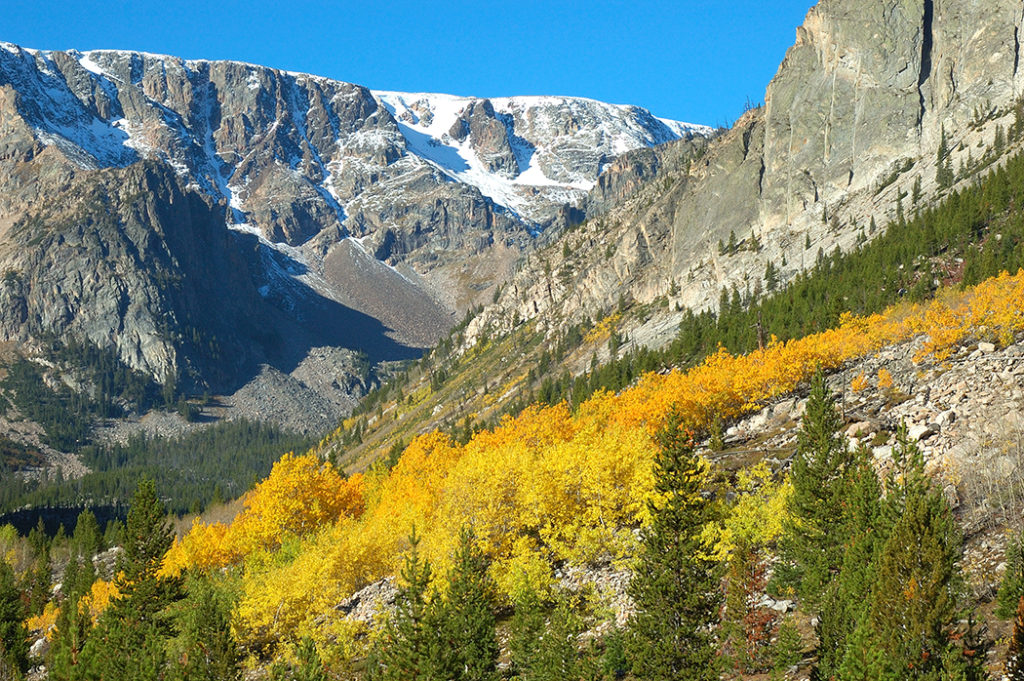Connectivity: An Overview
Public lands—including national forests—provide and preserve crucial habitat for many of our nation’s wildlife. However, in order to sustain the health of species and the ecosystems they live in, habitat within and beyond these areas must be connected. Connectivity (the ability for wildlife, plants, or other organisms to move across a landscape) helps ensure species can find food and mates, access favorable conditions as the seasons change, and respond to environmental changes caused by human activity or climate change. Connectivity between national forests helps prevent species from becoming stranded in ‘ecosystem islands,’ but connectivity within these areas is just as important.
Connectivity in Forest Planning
The U.S. Forest Service (USFS) manages nearly one-third of all federally-owned lands, including much of the best remaining wildlife habitat in the country. Their policies and actions can have significant and lasting impacts on habitat connectivity and conservation across the nation.
National forests are managed through forest plans, which describe recreation activities, conservation and land management goals, and other objectives for each individual forest. While some forest plans outline goals for promoting or protecting habitat connectivity on the forest, others do not. But in 2012, a new policy called the “2012 Planning Rule” was passed that, among other changes, requires that updated forest plans consider ecological connectivity during the revision process.
Now, many national forests and forest managers are preparing to incorporate connectivity into their forest plans for the first time. The process can contribute to improved connectivity for the benefit of wildlife, ecosystems, and people, but there are challenges with planning for connectivity on national forests. When considering connectivity in future forest plans, forest managers must navigate poorly-defined connectivity objectives, laws and policies lacking specific guidance, varied levels of coordination with other federal land managers, and limited data and resources.
A New Approach
To help address these challenges, the Center partnered with CGNF’s Forest Plan Revision Team to develop an innovative approach for improving and standardizing the USFS planning process for addressing connectivity. The scientific expertise and capacity provided by the Center have helped the CGNF incorporate the best available science on ecological connectivity in its revised plan.
Some of the advantages of the approach developed by the Center and CGNF staff include:
- Efficiently modeling connectivity needs for hundreds of species using a small number of virtual species that represent groups of real species with similar habitat requirements and movement patterns;
- Considering broader landscape context, including how USFS lands are linked with other areas of high-quality wildlife habitat in the region; and
- Using existing, publicly available data sets to minimize time and resource requirements associated with connectivity modeling.
The results of our connectivity analysis highlighted portions of the CGNF that are most critical to manage for unimpeded movement of wildlife. These findings are reflected in the connectivity considerations included in the revised CGNF Forest Plan, which was released in early July 2020.
Perhaps most significantly, the revised Forest Plan designates two “Key Linkage Areas” (KLAs), and shows areas within these KLAs that are important wildlife corridors linking core habitat to the north and south of the CGNF. The forest plan now calls for these KLAs to be managed such that “human disturbance does not limit habitat connectivity for wildlife.” To meet this objective, the forest plan outlines certain restrictions within these KLAs, including:
- Limiting use of heavy equipment or low-level helicopter flights for vegetation management;
- Prohibiting new development for the purpose of increasing recreation use; and
- Designing and locating any new permanent structure so that wildlife movement patterns are not permanently disrupted.
Staff from the Center and CGNF also co-authored a peer-reviewed article, published earlier this year in the journal Conservation Science and Practice, that describes their approach to addressing wildlife connectivity considerations in forest planning.
Looking Ahead
We are hopeful that the Center’s work with the CGNF will serve as an example for other national forests initiating their own forest plan revision process, and will result in similar protections for wildlife connectivity on other national forests. The Center has already completed similar wildlife connectivity analyses for the Bridger-Teton National Forest, which borders Yellowstone and Grand Teton national parks and contains some of the highest quality habitat remaining in the region.
Additional Resources
- Incorporating Connectivity into USFS Forest Plan Revisions (summary)
- Incorporating wildlife connectivity into forest plan revision under the United States Forest Service’s 2012 planning rule
- Custer Gallatin National Forest: Video by Bozeman District Ranger
For more information contact Tyler Creech, Spatial Ecologist, at tyler@largelandscapes.org
Image, top: Custer Gallatin National Forest, Montana



